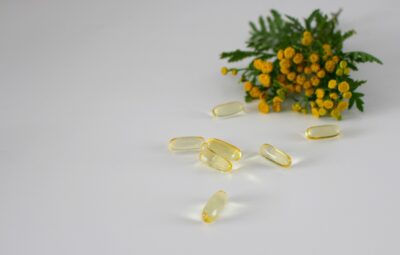Natural substances have the great opportunity to enhance our health and well-being.
These compounds can treat or manage specific problems.
Saw palmetto is a good example.
It is likely that you are familiar with it as a staple component in dietary supplements meant to maintain prostate wellbeing.
Is it more secure and more successful in taking these organic compounds than drugs?
Does saw palmetto provide better results than finasteride, which is the most widely used treatment for prostate issues?
Which one is better and safer for you? Learn more about saw palmetto vs finasteride below.
What Is Saw Palmetto?
Serenoa repens, commonly known as saw palmetto, is a species of shrub-like palm tree which is native to regions in southeastern America. The tree can reach a height of 10 feet, and its leaves have a torn-like shape, looking like a fan. The tree yields fruit that can be employed for medicinal reasons.
Saw palmetto has been employed for hundreds of years as a therapeutic treatment for issues including respiratory illness, issues related to male and female reproductive organs, and a variety of other diseases.
These days, saw palmetto is commonly taken to help treat symptoms of BPH (benign prostatic hyperplasia or enlarged prostate) with regards to the urinary tract. Some people take saw palmetto to treat hair thinning, address migraine headaches, and alleviate chronic pain in the pelvis area.
What Is Finasteride?
Finasteride is a drug that is prescribed to treat enlarged prostates as well as male pattern baldness. This product goes by the titles Propecia and Proscar.
In 1984, finasteride was initially introduced, but it wasn’t officially declared appropriate for medical usage until 1992. At that moment, the US Food and Drug Administration had authorized its use for benign prostatic hyperplasia only. In 1997, the FDA gave the go-ahead for finasteride to be used as a treatment for male pattern baldness.
Merck & Co, a leading drug manufacturer, created finasteride.
Saw Palmetto Vs Finasteride
Finasteride and saw palmetto are both employed to treat male hair loss and an enlarged prostate. Below, a comparison of saw palmetto to finasteride can be seen, especially regarding the treatment of prostate issues.
Effectiveness for Prostate Problems
No sufficient investigations have been conducted trying to determine which of finasteride and saw palmetto works better to treat issues associated with the prostate.
The American Family Physician review noted that saw palmetto has similar effectiveness to medication treatments like finasteride in dealing with prostate problems. The analysis also supports that saw palmetto is more cost-effective and has fewer side effects than the other drugs.
Furthermore, a report in Reviews in Urology indicated that an extract of saw palmetto was just as efficient as finasteride in relieving intense indications of an enlarged prostate.
A study conducted by Food Science and Technology declared that saw palmetto has beneficial medicinal properties. The emphasis was on enhancing the saw palmetto extract formula for greater uniformity in research results.
Finasteride is also a viable solution for treating issues relating to the prostate. Studies have demonstrated that using finasteride can decrease the size of the prostate by a fifth and favorably impact annoying urinary tract symptoms. The medication, while being effective, can also cause negative side effects, such as reduced sexual functioning.
Similarities and Differences Between Saw Palmetto and Finasteride
The mechanism of action and conditions treated are the same for both saw palmetto and finasteride. This post will provide more information on how they work.
Both saw palmetto and finasteride are primarily used to address issues such as alopecia and prostate issues.
Differences between saw palmetto vs finasteride revolve around potency. Generally, finasteride is more potent, as it takes a much smaller amount to show its effects.
Unlike finasteride, saw palmetto requires a higher dosage. Nevertheless, saw palmetto shows a greater degree of protection and has less likelihood of interfering with other pharmaceuticals.
In contrast to saw palmetto, finasteride must be prescribed by a doctor and obtained from a pharmacy. It is necessary to obtain a medical prescription before one can acquire finasteride.
In other words, saw palmetto is something that you can buy without a prescription from a pharmacy. It’s sold as a dietary supplement. At times, this can be procured by itself or blended with other substances that support prostate health.
Finasteride is only available in tablet form. Saw palmetto is more versatile. One can consume saw palmetto in tablet or capsule form as a supplement, but it can also be used to make a tea by drying it or even eaten in its entirety.
The most widely used way of taking it is the supplement form since it is more available than the other methods.
Benefits of Each One
Saw palmetto has a wide range of benefits, such as:
- Natural compound.
- Favorable safety profile.
- May prevent or treat hair loss.
- Improves urinary tract function.
- Supports prostate health.
- Exhibits anti-inflammatory effects.
- It may help regulate testosterone levels.
- May improve fertility.
On the other hand, benefits of finasteride include:
- Helps treat prostate problems.
- Has potential in managing hair loss.
- Anti-inflammatory action.
Side Effects and Risks of Each One
Saw Palmetto
Saw palmetto is considered safe for general consumption. The chances of suffering any ill effects are slim, and any reactions seen with saw palmetto are not severe and would pass away after a while.
Men who take medications that prevent their blood from clotting may wish to steer clear of taking saw palmetto as it may have a similar effect.
A few types of drugs that fall in this category are aspirin, warfarin (Coumadin), heparin, ibuprofen, enoxaparin (Fragmin), and more.
You should speak to the doctor before taking saw palmetto if you are on any type of medication that is in the same category. Your physician may indicate that it is acceptable to take the supplement with an altered dosage. Never alter the amount of medication you take without consulting a health professional.
Finasteride
When it comes to finasteride, the most common side effects include:
- Low sex drive.
- Skin rash.
- Erectile problems.
- Increased breast size and tenderness.
- Ejaculation problems.
- Chills
- Cold sweats.
- Confusion
- Dizziness or lightheadedness.
In some males, these adverse reactions may be drastic and ongoing, meaning they do not disappear by themselves. In these cases, men should consult their doctor.
Finasteride can cause rapid weight gain in some people. Possible side effects of taking finasteride may include rashes, prickling in extremities, a blocked or runny nose, abdominal cramps, and sensations of discomfort in the testicles.
Sometimes, finasteride can cause serious adverse reactions. Signs of a possible reaction to medication may involve puffiness of the facial area, lips, tongue, and throat; feeling of disheartenment; and formation of knots or soreness in the chest area. Individuals taking finasteride who experience adverse effects should seek prompt medical attention.
Saw Palmetto vs. Finasteride Study
This study involved 40 people and compared a mixture containing Saw Palmetto with the medication finasteride (also known as Propecia). The researchers looked into the influence that each therapy had on androgen concentrations in the prostatic tissue. Patients ingested the special Saw Palmetto mixture three times a day. It contained the following:
- Saw palmetto, 106 mg
- Stinging nettle root extract, 80 mg
- Pumpkin seed extract, 160 mg
- Lemon flavinoid extract, 33 mg
- Vitamin A, 90 mg
The study results showed that the combination of saw palmetto decreased the levels of DHT by 32%. The DHT levels of the group taking finasteride decreased by almost four-fifths. So, saw palmetto may not reduce your DHT levels to the same extent as finasteride, but it could possibly reduce them and impede your hair loss.
Saw Palmetto vs. Finasteride, Second Study
Interesting results here. This inquiry compared the results of finasteride with serenoa repens (saw palmetto) for a period of two years, which is more extensive than any of the other examinations I inspected. A total of 100 men with male pattern baldness, androgenic alopecia, were part of the study. Fifty people were given saw palmetto to take, and the other fifty got a prescription of finasteride. Here are a few of the key takeaways.
38% of the people using saw palmetto experienced enhanced hair growth. Only was the term the researchers used. But 38% is significant in my view. This suggests that, if I am interpreting the facts accurately, after two years of therapy, 38 percent of the individuals experienced advancement in comparison to when they began. That’s a positive outcome in my book. It didn’t specify what percentage of the patients were able to stabilize their hair loss with saw palmetto.
68% of individuals taking finasteride experienced successful outcomes. So yeah, 68% is much better than 38%. Point, Propecia.
Finasteride proved to be an effective means of treating hair loss on the frontal and vertex areas in varying amounts, while Saw Palmetto was chiefly efficient in addressing baldness on the crown.
Tips for Using Saw Palmetto Safely
- Don’t take it if you’re unhealthy – If you’re experiencing any kind of chronic, acute, or lingering medical issue, don’t take Saw Palmetto. At least not without clearing it with your doctor first.
- Make sure your state of mind is right – People who expect to have side effects have side effects, generally. Go in with an open mind. If you’re experiencing any kind of mental health issue, proceed with extra caution and seek counsel from a professional.
- Read the back of your bottle and follow the instructions – Obviously. Many skip this step though.
- Get checked out – This is really a good idea. Make sure your hormones are functioning normally and at healthy levels. Have your annual physical a little bit early this year. I believe it’s probable that a significant percentage of post-finasteride syndrome sufferers had medical issues they didn’t know about before they started with the drug.
Top Saw Palmetto Supplements
First, a disclaimer: the supplement industry is notoriously unregulated. The variability in terms of excellence, steadiness, and potency of saw palmetto products is vast. So I’d suggest sticking with known and trusted brands. It doesn’t appear to be provided by a lot of the most trusted companies in the business when it comes to the 160 mg type of saw palmetto. I was able to locate some formulas from well-known companies that were generally well-reviewed. They include:
- Source Naturals Saw Palmetto Extract – Source Naturals is a well-regarded supplement brand that’s been around since the 80s. Their 160 mg saw palmetto supplement looks to be a fairly new offering, but they have a solid reputation, and I’d personally feel comfortable buying this one.
- Now Foods Saw Palmetto Extract – Now Foods has been a prominent supplement manufacturer since 1968. This product has solid reviews and looks like a good option.
- Revivogen Scalp Therapy – Formulated by board-certified dermatologist Alex Khadavi, this topical hair regrowth system contains Saw Palmetto Extract, azaelic acid, B vitamins, and a variety of other natural ingredients that can thicken hair. It’s one of the more popular, natural products on the market. Reviews are mixed, but that’s common with most hair loss treatments.
5 Saw Palmetto FAQs
1. What are the side effects of Saw Palmetto?
According to WebMd, the general consensus is that saw palmetto is safe to use for most people, and the effects of it are usually not severe. It is not advisable for kids, expecting mothers, or nursing mothers.
Some possible unwanted reactions they cite are feeling lightheaded, having a headache, feeling queasy, throwing up, being unable to go to the bathroom, and having loose stools. Eating the supplement with food may reduce the adverse reactions. Some customers who have taken saw palmetto have reported negative effects on their sex life, although sites that are reliable, such as WebMd, usually don’t list such potential side-effects. Also, I will discuss in a moment an enigmatic experience labeled “post saw palmetto” condition.
Saw palmetto may slow blood clotting. If you have to have surgery, it is best to discontinue the intake of saw palmetto two weeks before the operation. Be sure to consult with a medical professional before starting any regimen that involves taking saw palmetto.
2. Which is better, Saw Palmetto or Propecia?
It looks as though Propecia (or the generic form of finasteride) is much more successful at reducing DHT levels compared to Saw Palmetto. It is likely that Propecia will be better at treating your hair loss. Individuals who are hesitant to take Propecia out of worry about the possibilities of sexual side effects usually take Saw Palmetto as a substitute made from natural elements. This text suggests that it has the possibility to be a successful, natural solution to hair loss.
3. Should I Take a Saw Palmetto Lotion or a Capsule?
The pills appear to be more favored than the creams. They treat hair loss from within. Lots of people use minoxidil together with saw palmetto as a treatment for hair loss. Reviews for items like revinogen, which have saw palmetto in their ingredients list, are proving to be positive.
4. What Is the Optimal Dosage to Take?
320 milligrams is often the recommended starting dosage. Again, you should check with your doctor first. Dr. Andrew Weil, M.D., a renowned doctor and plants expert, recommends consuming 160 mg two times per day to help stop hair loss.
5. Will My Sex Drive Decrease If I Take It?
It’s possible but unlikely. It has been said that Saw palmetto may be helpful in treating low sex drive. It reduces the amount of DHT in your body, but DHT does not exclusively determine how strong your libido is. Hormones are complicated. Certain forms of physical activity as well as certain types of food can reduce your DHT levels. It is unlikely that either the food you eat or the physical activity you engage in will have a significant impact on your libido.
Conclusion
It has been demonstrated in this post that saw palmetto and finasteride possess various similarities and discrepancies. Although they both take a similar approach, their outcomes are not the same.
It can be said that saw palmetto is nearly as effective as finasteride, but it carries fewer risks for use. The probability of side effects is not very high with saw palmetto, but finasteride carries a heightened risk of negative responses.
Also, saw palmetto isn’t as detrimental to sexual health. While finasteride is a manufactured chemical, saw palmetto is a natural remedy.







